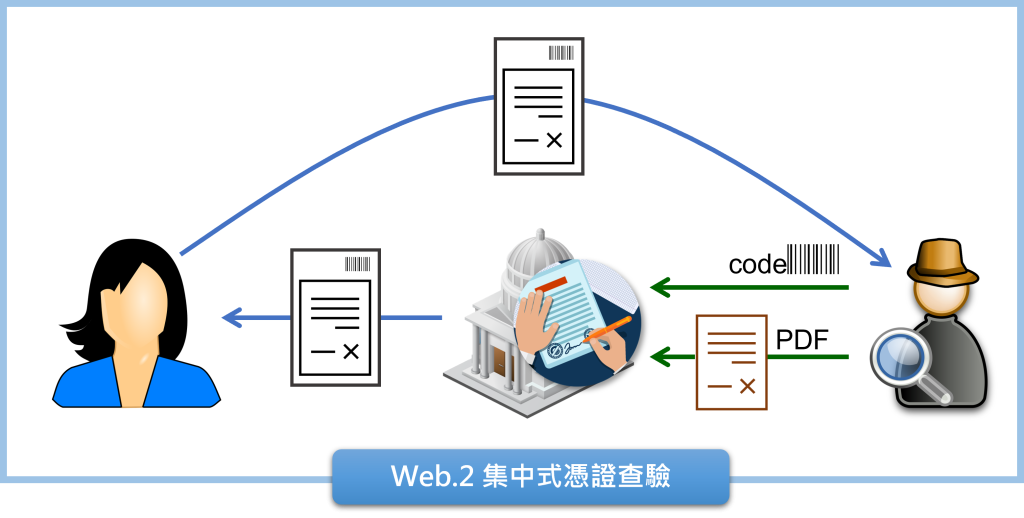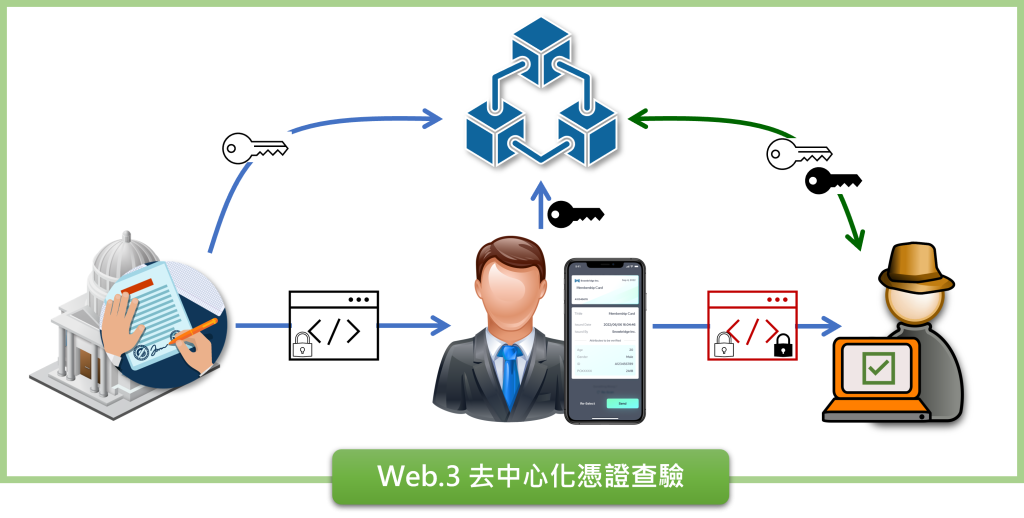In the Web 3.0 era, verifiers no longer need to connect to the issuer’s system or manually read PDF files. Instead, they can rely on information systems to read digital credential files in verifiable formats and automatically perform verification by obtaining Issuer’s keys and credential definitions from the blockchain.

Many government agencies’ initiatives of digitization convert paper documents into PDF files, assign a code to the PDF certificate, and have the certificate holder provide the code for verification. The verifier then uses the code to access the PDF file online in the issuer’s system and visually confirms the authenticity of the document.
- The PDF file is not machine-readable, human visual works cannot be avoided.
- High implementation cost is needed to integrate between numerous verifiers and issuers’ information systems
- The content of the PDF data cannot be further used by information systems, causing operational interruptions.

With a verifiable credential system, the certificate is electronically signed by the issuer and controlled by the holder. When receiving a verification rule, the holder wallet extracts the data in credential and generates a machine-readable proof file for the verifier. The verifier’s system then connects to the blockchain to verify the authenticity of the data, and use data for subsequent processing.
- The proof is machine-readable and verifiable, allowing for completely automated operation.
- The verifier only needs to access the public blockchain to verify numerous types of certificates. No integration to issuers is needed.
- If the verifier needs to view the paper certificate, the verifiable credential can also include a link to retrieve the image of paper certificate.